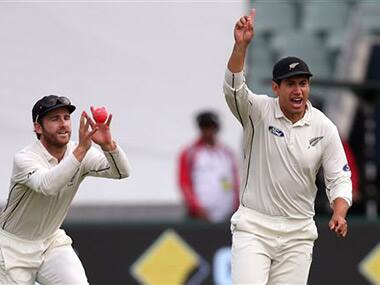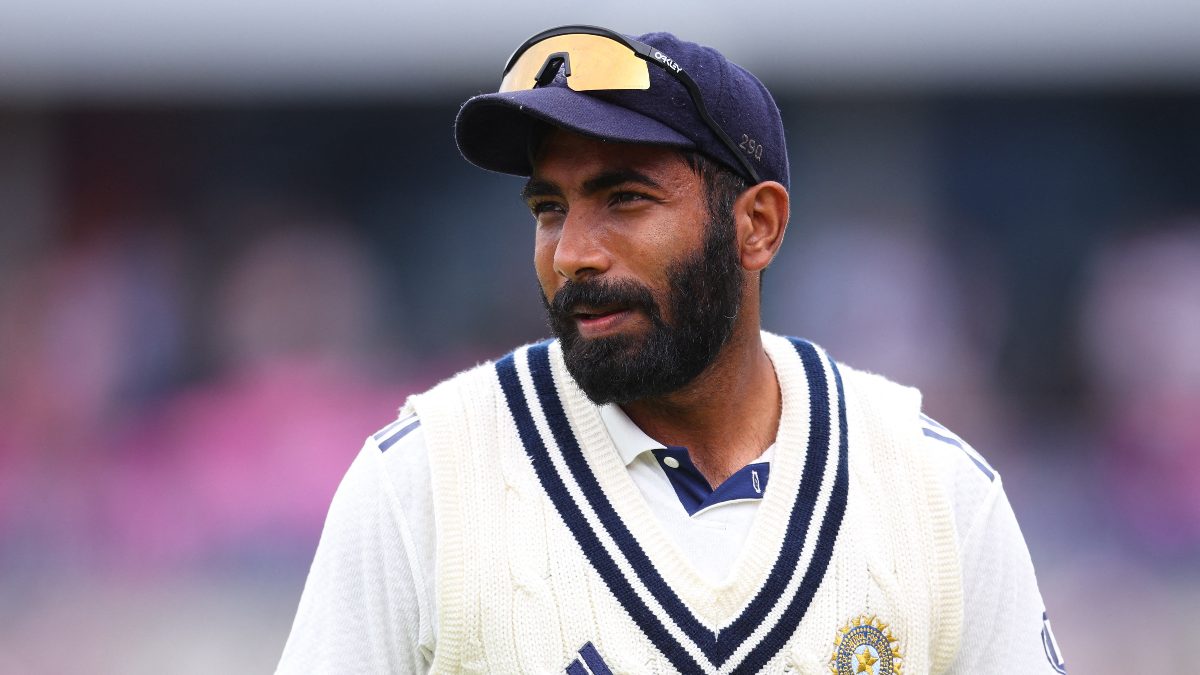Another 13 wickets tumbled as bowlers again dominated with the pink ball in the first day-night cricket test on Saturday, leaving a teetering New Zealand with a 94-run lead and the Decision Review System clearly in the spotlight. Australia resumed at 54-2 on day two in reply to New Zealand’s 202, and had slumped to 116-8 when Nathan Lyon got the benefit of a contentious call from the TV umpire before he’d scored and then went on to add 34 runs that helped Australia reach 224 all out — a 22-run first-innings lead. [caption id=“attachment_2525348” align=“alignleft” width=“380”]  More than 47,000 people attended day one, and 42,372 more filed into the stadium Saturday — ensuring a decent total even if the historic day-night test doesn’t last more than one more day. AP[/caption] The New Zealand openers survived seven overs before the dinner interval to get the score back on level terms, but when the pink ball started swinging under the lights again wickets started falling, and New Zealand staggered to stumps at 116-5 in its second innings. With Australia’s pace spearhead Mitchell Starc unable to bowl because of injury, Josh Hazlewood took charge and snared three wickets — as well as having two catches put down — to return 3-32. Hazlewood removed Martin Guptill (17) and Tom Latham (10) as New Zealand slipped to 32-2 and had Ross Taylor dropped at second slip by skipper Steve Smith before he’d scored. Mitch Marsh claimed the key wickets of Kane Williamson (9) and Brendon McCullum (20) before Hazlewood returned to trap Taylor lbw for 32 as the tourists slid to 98-5. Unbeaten pair Mitchell Santner (13) and B.J. Watling (7) need to bat for a long time Sunday to set up a reasonable target. More than 47,000 people attended day one, and 42,372 more filed into the stadium Saturday — ensuring a decent total even if the historic day-night test doesn’t last more than one more day. The momentum shifting episode came after the Australians lost 6-62 in the first session and could have slumped to 118-9 shortly after tea when Lyon attempted a sweep shot against left-arm spinner Santner, was hit on the shoulder and the rebound was caught at slip. Lyon was given not out, but New Zealand challenged the decision, believing he’d edged the ball as he swiped, and the hot spot technology used in the DRS appeared to highlight a mark on his bat. But English official Nigel Llong decided, on the basis that the snicko technology didn’t reflect any edge, that the evidence was inconclusive. Lyon, who had started walking back to the pavilion after seeing a replay of his sweep on the stadium screen, went back to the crease, went on the attack and Australia added another 106 runs. His 74-run partnership with Peter Nevill (66) equaled the record for a ninth-wicket stand in a trans-Tasman test match, adding insult to injury for the New Zealanders. “The players were pretty confident that it was out. Obviously the hot spot that showed up, Lyon walking off and nearly getting to the boundary…” Taylor said. “I think it’s had a big bearing on the match. But yeah, it is what it is. We’ve just got to get on with it.” Nevill continued with Starc, who batted despite the stress fracture in his right foot, in a 34-run last-wicket stand. Starc, unable to run, had an lbw decision against him overturned by the TV umpire before he clobbered an unbeaten 24 from 15 balls, including two boundaries and two sixes over long-on in one Mark Craig over. Nevill was last man out when he was caught in the deep off Doug Bracewell (3-18). The first session was dominated by New Zealand, with three wickets falling in the last 15 minutes, triggered by Craig’s double-wicket maiden when he had Smith (53) and Peter Siddle (0) out within five balls. The Adelaide Oval has turned tradition upside down for Australian test venues, continuing a trend in the series. Bat dominated ball at the usually pace-friendly grounds in Brisbane and Perth, but the bowlers have dictated at Adelaide, which is usually a high-scoring arena. “The wicket’s not that bad to have so many wickets taken in two days,” Hazlewood said. “We had a middle-order collapse — we should probably be still batting. We’ll try and fix that for the second innings.” AP
More than 47,000 people attended day one, and 42,372 more filed into the stadium Saturday — ensuring a decent total even if the historic day-night test doesn’t last more than one more day.
Advertisement
End of Article
Written by FP Archives
see more


)

)
)
)
)
)
)
)
)



